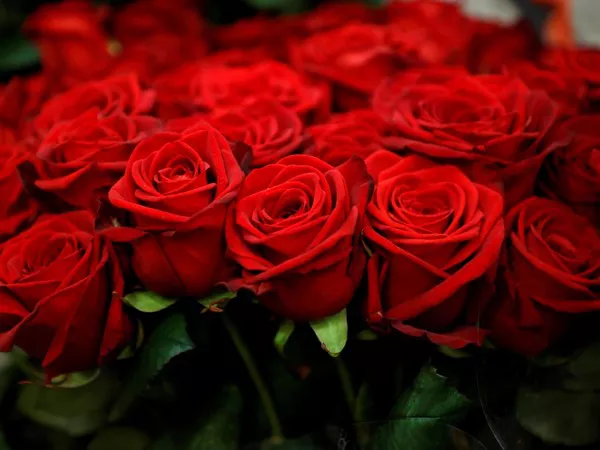Floristry, the art of arranging flowers, is a delicate balance of creativity, business acumen, and resource management. In this thriving industry, where freshness and beauty are paramount, florists often face the challenge of dealing with unsold flowers. What happens to these blooms once they surpass their prime? This article delves into the strategies employed by florists to manage unsold flowers efficiently, ensuring minimal waste and maximum value.
Understanding the Life Cycle of Flowers
Before delving into the fate of unsold flowers, it’s essential to understand the life cycle of these delicate botanicals. Freshly cut flowers have a finite lifespan, varying depending on factors such as species, environmental conditions, and handling. Typically, flowers progress through stages from bud to bloom to eventual senescence, where they wilt and lose their appeal.
The Role of Seasonality and Demand
Florists operate in a dynamic environment influenced by seasonality and fluctuating demand. Certain occasions, such as Valentine’s Day and Mother’s Day, witness a surge in flower sales, while others may experience slower periods. Consequently, predicting demand accurately is crucial for florists to avoid overstocking and minimize unsold inventory.
Strategies for Managing Unsold Flowers
Despite meticulous planning, florists inevitably encounter unsold flowers due to various factors like changing customer preferences, weather conditions, and unexpected fluctuations in demand. However, proactive measures can mitigate the impact of unsold inventory and maximize its value.
1. Flower Recycling and Composting
One of the most environmentally conscious approaches to managing unsold flowers is recycling and composting. Florists can repurpose unsold blooms by composting them to create nutrient-rich soil amendments. This eco-friendly practice not only reduces waste but also contributes to sustainable gardening practices.
2. Donations to Charitable Organizations
Many florists choose to donate unsold flowers to charitable organizations, such as hospitals, nursing homes, and shelters. These donations brighten the day of individuals facing challenging circumstances while allowing florists to fulfill their social responsibility. Additionally, donating unsold flowers can garner positive publicity and enhance the florist’s reputation within the community.
3. Floral Arrangement Workshops and Classes
Hosting floral arrangement workshops and classes presents an innovative way for florists to utilize unsold flowers. By inviting customers to participate in hands-on sessions, florists not only engage with the community but also generate revenue from ticket sales. Participants learn valuable skills while creating beautiful arrangements using flowers that might otherwise go to waste.
4. Repurposing for Dried Flower Arrangements
Certain flowers lend themselves well to drying and can be repurposed for dried flower arrangements. Florists can capitalize on this trend by transforming unsold blooms into long-lasting floral creations. Dried flower arrangements appeal to a different demographic and offer a unique product offering for customers seeking sustainable and low-maintenance décor options.
5. Collaboration with Local Artists and Designers
Collaborating with local artists and designers presents an opportunity for florists to repurpose unsold flowers in innovative ways. From botanical-inspired art installations to floral-infused fashion accessories, the possibilities are endless. By fostering creative partnerships, florists can breathe new life into unsold inventory and tap into niche markets.
6. Offering Discounts and Promotions
To stimulate demand and reduce unsold inventory, florists can offer discounts and promotions on leftover flowers. Whether through flash sales, BOGO (buy one, get one) offers, or discounted bulk purchases, incentivizing customers to purchase unsold blooms can help recoup losses and free up valuable shelf space for fresh inventory.
7. Flower Preservation Techniques
Flower preservation techniques, such as drying, pressing, and freeze-drying, enable florists to extend the lifespan of unsold flowers. Preserved flowers retain their beauty and can be used in various applications, including floral art, jewelry, and home décor. By incorporating preserved blooms into their product offerings, florists cater to customers seeking long-lasting floral solutions.
8. Strategic Marketing and Merchandising
Effective marketing and merchandising strategies play a pivotal role in managing unsold flowers. By strategically showcasing and promoting seasonal blooms, florists can stimulate demand and minimize the accumulation of excess inventory. Utilizing social media platforms, email newsletters, and in-store signage, florists can communicate the beauty and freshness of their offerings, encouraging customers to make purchases.
Conclusion
In the dynamic world of floristry, managing unsold flowers requires creativity, flexibility, and strategic planning. By adopting a multifaceted approach that encompasses recycling, donations, workshops, collaborations, discounts, preservation techniques, and strategic marketing, florists can minimize waste while maximizing the value of unsold inventory. Ultimately, embracing innovation and sustainability not only benefits the bottom line but also reinforces the florist’s commitment to environmental stewardship and community engagement.


